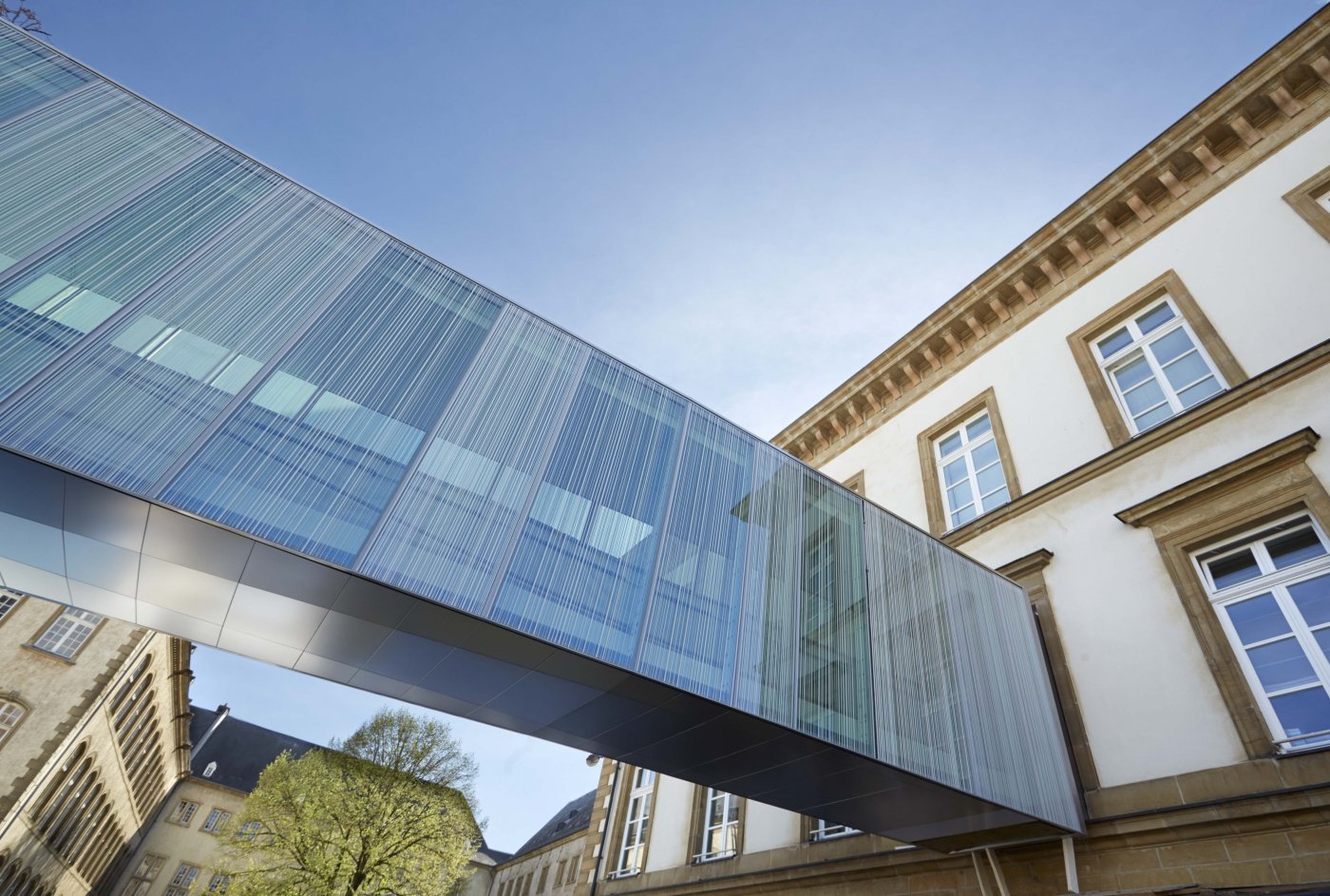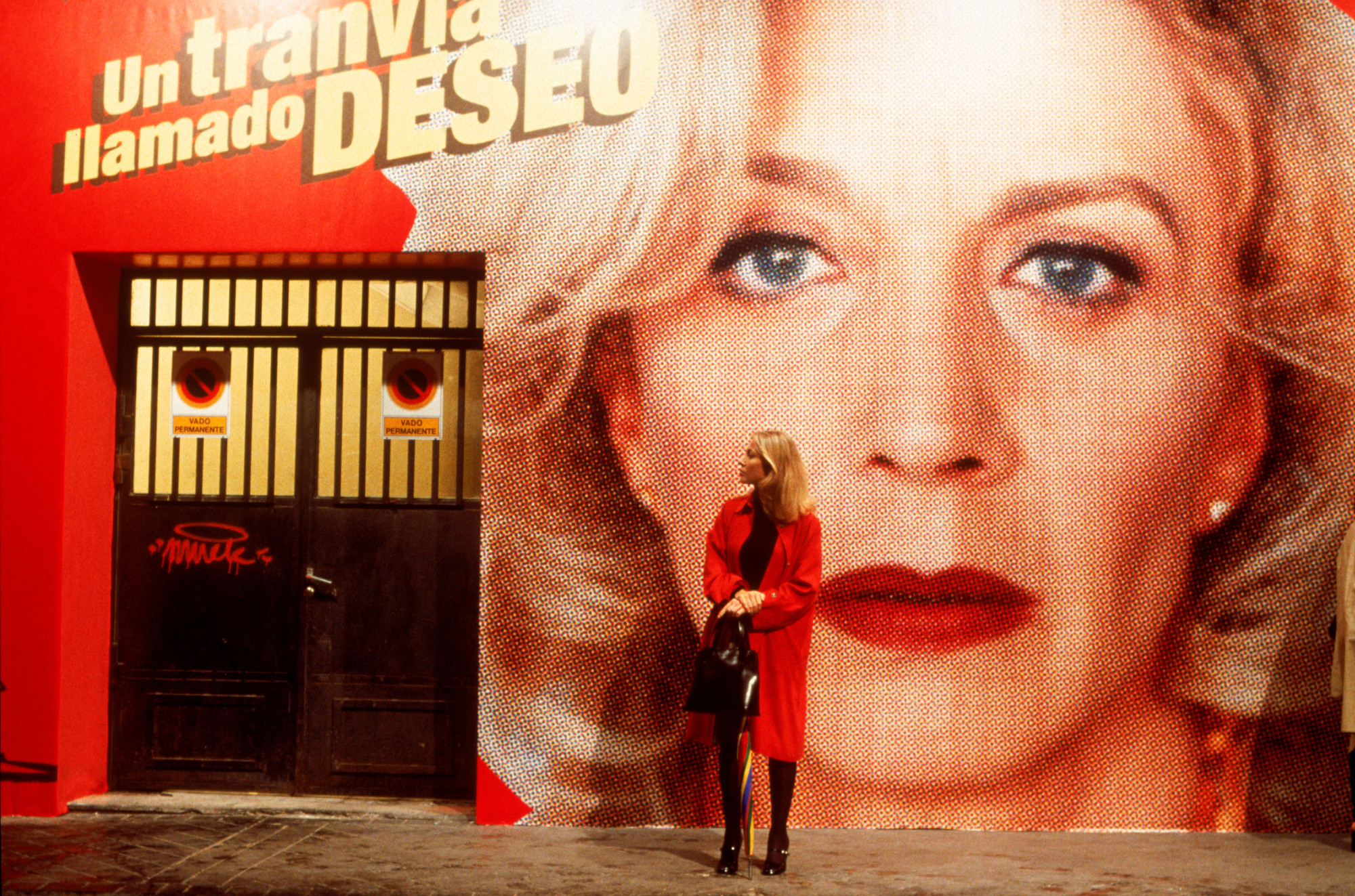Operating costs of church buildings
Question posed by Tom Krieps
"Mayor Polfer,
A recent court decision ruled in favour of a city in northern Luxembourg that wanted to completely fund the operation of a church that belongs to the municipality and is rented to Fonds des églises (Church Fund).
Among other things, the heating is paid for by the municipal authority, which is, to say the least, unusual for a lessor and all the more so since no agreement has been signed with the Fonds des églises.
Despite this state of affairs, will the City continue to have the tenant pay for operating costs?
What amounts is the City willing to pay, and what do they cover?"
Response provided by Lydie Polfer
"Councillor Krieps,
Thank you for giving me the opportunity to respond to your letter dated 12 April 2021 in which you asked a question about churches' operating costs.
Having spoken with the relevant departments, I can tell you the following:
As the owner of 21 religious buildings located within the capital, the City of Luxembourg entered into an occupancy agreement with the Fonds de gestion des édifices réligieux (fund for the management of religious buildings) in accordance with the Law of 17 March 2016 repealing the decree of 30 December 1809 on parish property administration (loi du 17 mars 2016 abrogeant le décret du 30 décembre 1809 concernant les fabriques d'église) and the Law of 13 February 2018 on the creation of a Fund for the Management of Religious Buildings and Other Property Pertaining to Catholic Worship (loi du 13 février 2018 portant sur la création d'un Fonds de gestion des édifices religieux et autres biens relevant du culte catholique), which stipulates that this fund will pay for operating and routine maintenance costs.
As the owner of these sites, the City covers the costs of preservation, construction, maintenance and refurbishment of its religious buildings, which allows it to protect Luxembourg City's built and historic heritage.
While it is conceivable that improvements may be made to buildings at the City's expense, such as for an 'energy upgrade' (e.g., by installing attic insulation), there are currently no plans for the City to pay the operating costs.
This response is being provided to you in accordance with Article 25 of the Municipal Law and Article 9§6 of the municipal council's internal rules and regulations of 13 May 2013 and thus constitutes a written response to the question posed. It will be published in the minutes and on the City of Luxembourg website."
Unauthorised dumping of waste
Question posed by Tom Krieps
"Mayor Polfer,
I am sure you have noticed that not a day goes by without uncivil citizens dumping all manner of waste near public containers – such as the one on Rue de la Toison d'Or – which are often overflowing with large amounts of waste that your departments are required to remove at great cost on Monday mornings and on days following public holidays.
The traditional 'Ouschterbotz' seems to have inspired some people to dump entire bags near the Kockelscheuer car park, creating an unwelcome sight for visitors to this area.
Could you tell me what steps your administration plans to take to put a stop to this uncivil behaviour?"
Response provided by Lydie Polfer
"Councillor Krieps,
Thank you for giving me the opportunity to respond to your letter dated 12 April 2021 in which you asked a question about the unauthorised dumping of rubbish near containers, and more specifically the ones on Rue de la Toison d'Or and in the Kockelscheuer car park.
Having spoken with the relevant departments, I can tell you the following:
The City is well aware of the illegal dumping problems at the 57 public collection stations where people can dispose of their recyclable materials.
Indeed, the collection station on Place de Bragance (Rue de la Toison d'Or) is one of the most frequently used stations and currently has two large containers measuring 15 m3 and three containers measuring 3 m3 for the separate collection of paper and cardboard, and three containers measuring 3 m3 for the separate collection of glass.
The containers are emptied every day, and workers from the Service Hygiène (Sanitation Department) make their rounds seven days a week between 5:00 and 19:00 on weekdays, and between 6:00 and 11:00 on weekends. The only duties of these workers are to clean the areas surrounding these collection stations and to remove any unauthorised rubbish they find there.
There is currently a person from the Service Hygiène who is tasked with investigating cases of unauthorised dumping with the aim of finding the culprits and sending them a bill to reimburse the City for the removal costs in accordance with Article 20 (5) of the amended Law of 21 March 2012 on waste management (loi modifiée du 21 mars 2012 sur la gestion des déchets). As this procedure has proven to been effective, there are plans to extend it.
With this in mind, we should note that draft law 7126 on administrative sanctions, which aims to broaden the authority of municipal workers, may play an important role in preventing the illegal dumping of waste.
At the same time, the Service Hygiène is continuing its efforts to educate Luxembourg City residents and visitors about proper waste disposal practises. Accordingly, new, intuitive, easy-to-understand visuals have been posted at all the collection stations showing what materials may and may not be placed in the containers, informing users that it is forbidden to leave waste or materials next to the containers, and providing information on alternative disposal methods.
The Kockelscheuer car park is cleaned regularly by designated workers from the Service Parcs (Parks Department). In the summer, cleaning and maintenance are also done on Saturdays and Sundays.
This response is being provided to you in accordance with Article 25 of the Municipal Law and Article 9§6 of the municipal council's internal rules and regulations of 13 May 2013 and thus constitutes a written response to the question posed. It will be published in the minutes and on the City of Luxembourg website."
Relocation of the Office social
Question posed by Cathy Fayot
"Mayor Polfer,
The City of Luxembourg's Office social (Social Welfare Office) has grown considerably in the last 10 years. Since becoming a public establishment with the entry into force of the Law of 18 December 2009 on social assistance (loi sur l'aide sociale du 18 décembre 2009), the
The departments of the Office social currently operate from three different sites.
Knowing that there are plans to relocate the departments to a City-owned building on Rue de Strasbourg, I would like to ask the following questions:
- Are there still plans to move the departments of the Office social to the building on Rue de Strasbourg that is currently being renovated?
- If so, when is the work scheduled to be completed?
- And if so, will this building house only the departments of the Office social, or are there plans to relocate other City of Luxembourg departments there?
- Considering that the number of employees is set to grow in the coming months, is there an existing alternative?"
Response provided by Lydie Polfer
"Councillor Fayot,
Thank you for giving me the opportunity to respond to your letter dated 15 April 2021 in which you asked a question about relocating the departments of the Office social to a City-owned building on Rue de Strasbourg.
Having spoken with the Service Architecte (Architecture Department), I can now tell you the following:
The plans to relocate the departments of the Office social to the building on Rue de Strasbourg that is currently being renovated are still on the table. The work is scheduled to be completed by 15 September 2022.
The Service Logement (Housing Department) will also be moving into the same building.
At the moment there is no alternative under consideration.
An additional floor will be built to create backup offices for future users.
As a result of discussions with the Office social and the Service Logement during the work phase, ad hoc changes to the configuration and furnishing of the offices were made. Consequently, the total number of workstations for the Office social departments was increased from 53 to a maximum of 56. At the same time, the total number of workstations for the Service Logement rose from 29 to a maximum of 31.
This response is being provided to you in accordance with article 25 of the Municipal Law and Article 9§6 of the municipal council's internal rules and regulations of 13 May 2013 and thus constitutes a written response to the question posed. It will be published in the minutes and on the City of Luxembourg website."
Living conditions of housing
Question posed by Christa Brömmel
"Mayor Polfer,
Luxemburger Wort recently ran an article under the headline 'Diese marode 1-Zimmerwohnung kostet 750
Euro pro Monat'. The accommodation in question is located in the city and the article raises the issue of housing that is not in compliance with the legal provisions on hygiene. This means that there are many people living in housing that does not meet the hygiene requirements set out in the Law of 20 December 2019 concerning the hygiene, health, safety and liveability criteria for housing and rooms rented out or made available for residential use (Loi relative aux critères de salubrité, d'hygiène, de sécurité et d'habitabilité des logements et chambres donnés en location ou mis à disposition à des fins d'habitation) and its Grand-Ducal Regulation of 20 December 2019 laying down the minimum hygiene, health, safety and liveability criteria to which housing and rooms rented out or made available for residential use must conform (Règlement grand-ducal déterminant les critères minimaux de salubrité, d’hygiène, de sécurité et d'habiltabilité auxquels doivent répondre les logements et chambres donnés en location ou mis à disposition à des fins d'habitation).
The law states that the mayor is responsible for monitoring compliance with current requirements.
In accordance with Article 9 of the municipal council's internal rules and regulations, I would like to put the following questions to the College of Aldermen:
- The City of Luxembourg website provides information on only 10 housing units offered by private or commercial property owners to accommodate a total of 30 people, and rooms for 9 people rented out by café or restaurant owners. Are these all the rooms and housing units of this kind available for rent in Luxembourg City? What is the College of Aldermen doing to ensure compliance with Article 3 of the Law of 20 December 2019, which stipulates that 'any property owner or operator that leases or makes one or more rooms available is required to make a prior declaration to the mayor of the municipality, stating the maximum number of people that may live in said room(s), and including a plan of the premises'?
- How does the City of Luxembourg go about inspecting the housing units in question? Are inspections performed spontaneously, routinely or at a tenant's request? In particular, how are they carried out in houses that have many tenants but do not have the status of a multi-occupancy building?
- How many inspections are performed each year? What proportion of inspected housing units are found to not be in compliance with the hygiene standards? Is this phenomenon becoming more frequent? Which districts are most affected? Is there a list of housing units that are inspected and found to not be in compliance with the requirements of the law?
- How many people/tenants on average are affected per year? Are there cases where the City, instead of the owner or manager of the accommodation, has had to rehouse people? What other support or assistance does the City of Luxembourg provide for these people?
- What mechanisms has the City of Luxembourg put in place to inform tenants of their rights and remind property owners of their obligations?
- Could this issue be raised with the social committee?"
Response provided by Lydie Polfer
"Councillor Brömmel,
Thank you for giving me the opportunity to respond to your letter dated 19 April 2021 in which you asked a question about the hygiene of leased accommodation and rooms.
Having spoken with the Service Logement (Housing Department), I can tell you the following:
The City of Luxembourg website provides information only about collective housing that is inspected by the 'furnished rooms' committee and certified as compliant. The number of people who may live in this housing is not indicated; the number displayed corresponds to the number of keys allocated in relation to the compliance criteria.
A form entitled 'Declaration of furnished accommodation and collective housing' is available on the City of Luxembourg website so property owners and operators can declare their rooms. In addition, since 2011 these forms have been distributed in cafés and restaurants in Luxembourg City. During inspections, they are also routinely distributed to property owners and operators who have not yet declared their rooms. However, the exact number of this type of accommodation in Luxembourg City cannot be determined, given that some property owners and operators do not comply with the obligation to submit a declaration to the mayor.
In 2010, a special 'furnished rooms' committee was created to ensure that accommodation and rooms are inspected on a weekly basis. This committee comprises representatives from the City of Luxembourg's Service Logement, Service Urbanisme (Urban Planning Department) and Grand Ducal Fire and Rescue Corps (Corps grand-ducal d'incendie et de secours – CGDIS), with the Service régional de Polices Spéciales (Regional Department of Special Police) as a permanent guest member. Inspections are carried out every Wednesday morning and afternoon outside of school holiday periods. During school holidays, inspections are performed only in case of emergency. Nevertheless, inspections are also scheduled at the request of a tenant, or a property owner seeking the opinion of the City's departments so they can bring a building into compliance.
On average, around 60 inspections are carried out each year.
A number of the inspected housing units failed to meet the legal hygiene standards. It is important to note that it may be difficult for operators of rooms located above a café to bring these rooms into compliance when the brasserie or owner does not cooperate. However, the number of accommodation units that do not meet requirements remains stable and is not increasing.
Since routine inspections began in 2010, we have found that when purchasing a building, the owners or their architects often contact the City to request advice from different departments on bringing a building into compliance for the purpose of leasing rooms.
Given that the committee is not familiar with all the existing collective housing, it is difficult to determine which district is most affected. Meanwhile, individual rooms are now also being rented out in apartments.
Housing that has been inspected is recorded in a special software programme designed specifically for that purpose.
If a building is found to fall short of the hygiene criteria, this does not mean that the whole building is closed and all the tenants are forced to leave. A distinction must be drawn between minor violations and serious violations, and the overall condition of the building must be taken into account. After the inspection, the property owner and operator are given notice to remedy any defects that are found by a certain deadline. In some cases, the building may be partially closed, that is to say, only those rooms that do not meet the criteria regarding required habitable space are closed, or when the second escape route is blocked. It is then the responsibility of the property owner or operator to terminate the contracts. If the affected tenants are still present on the day of closure or eviction, the Service Logement rehouses them.
Since inspections began, the City has enacted 12 closures by municipal decree, whereby the Service Logement was required to rehouse tenants who had not found new accommodation. Most inspected buildings have been closed only partially.
The sites available for rehousing are Foyer Openthalt, Foyer Moulin d'Eydt, Haus 1, Haus 15 and the Hôtel Delta. In addition, the City has storage facilities to hold the personal belongings of people who are rehoused.
Since 2011, the City has held several press conferences, and an information sheet is distributed together with the declaration of furnished accommodation or collective housing forms. A flyer has been created in French, German and Portuguese summarising the criteria that must be met and listing the relevant contact people.
Since the new Law of 20 December 2019 on hygiene, health, safety and liveability criteria took effect, the text of this law and its implementing regulations have been attached to the formal notices sent to property owners and operators to inform them of the additional steps that must be taken after the interim period provided for in the law.
This response is being provided to you in accordance with Article 25 of the Municipal Law and Article 9§6 of the municipal council's internal rules and regulations of 13 May 2013 and thus constitutes a written response to the question posed. It will be published in the minutes and on the City of Luxembourg website."
Old project to build a pedestrian bridge spanning the Pétrusse Valley
Question posed by Tom Krieps
"Mayor Polfer,
In 1963, the City of Luxembourg published a plan of the fortress to mark its thousandth anniversary.
This plan, which was produced by the architect Henri Luja, envisioned a pedestrian bridge spanning the Pétrusse Valley, from the end of Rue des Jardiniers to the public space on Boulevard de la Pétrusse, at the corner of Rue Adolphe Fischer.
I would like to know why this bridge was never built, and whether might be appropriate to examine its feasibility, as its usefulness seems clear to me."
Response provided by Lydie Polfer
"Councillor Krieps,
Thank you for giving me the opportunity to respond to your letter dated 28 June 2021 about the old project to build a pedestrian bridge spanning the Pétrusse Valley from Rue des Jardiniers to Boulevard de la Pétrusse.
Having spoken with the Service Circulation (Traffic Department), I can tell you that when the cycle path was constructed under the Pont Adolphe as part of the upgrade of the bridge, a safe connection for cyclists and pedestrians was created between the Bourbon Plateau and the districts that lie on the other side of the Pétrusse Valley. Cyclists may reach Rue des Jardiniers from the Pont Adolphe by taking Rue de la Semois, which is subject to the regulation prohibiting traffic and therefore closed to vehicular traffic.
As this connection for cyclists and pedestrians already exists, there are no plans to build a second bridge, which would be a major undertaking considering that it would be more than 160 metres long and would span the entire width of the Pétrusse Valley.
The land restoration project in the Pétrusse Valley includes plans to supplement and upgrade the existing infrastructure that encourages residents and visitors to walk or cycle.
Moreover, the construction of an elevator connecting the Pétrusse Valley and Place de la Constitution is included in the urban planning competition for the redevelopment of Place de la Constitution, which is being organised by the Public Building Administration (Administration des Bâtiments publics) and which the City is participating in.
This response is being provided to you in accordance with Article 25 of the Municipal Law and Article 9§6 of the municipal council's internal rules and regulations of 13 May 2013 and thus constitutes a written response to the question posed. It will be published in the minutes and on the City of Luxembourg website."
Parking spaces for people with reduced mobility in the Glacis car park
Question posed by Tom Krieps
"Mayor Polfer,
A city resident informed me that although it is large, the Glacis car park has only one parking space for people with reduced mobility, and it is located in the lower section, at the corner of Avenue de la Faïencerie. Shouldn't we consider adding a space in the upper section of this car park, near the public toilets, for example?"
Response provided by Lydie Polfer
"Councillor Krieps,
Thank you for giving me the opportunity to respond to your letter dated 2 August 2021 in which you asked to add a parking space for people with reduced mobility in the Glacis car park, near the public toilets.
Having spoken with the Service Circulation (Traffic Department), I can tell you that the Glacis car park currently has seven parking spaces for people with reduced mobility located at the ends of
In addition, according to Article 3 of the City of Luxembourg tax regulations, drivers of vehicles with the disabled persons parking permit created by the Grand-Ducal Regulation of 31 January 2003 are exempt from paying the taxes stipulated in Article 1, subsection 1 as long as they park their cars on the roadside. These exemptions do not, however, apply to parking places marked as disabled parking spots.
This response is being provided to you in accordance with Article 25 of the Municipal Law and Article 9§6 of the municipal council's internal rules and regulations of 13 May 2013 and thus constitutes a written response to the question posed. It will be published in the minutes and on the City of Luxembourg website."

















